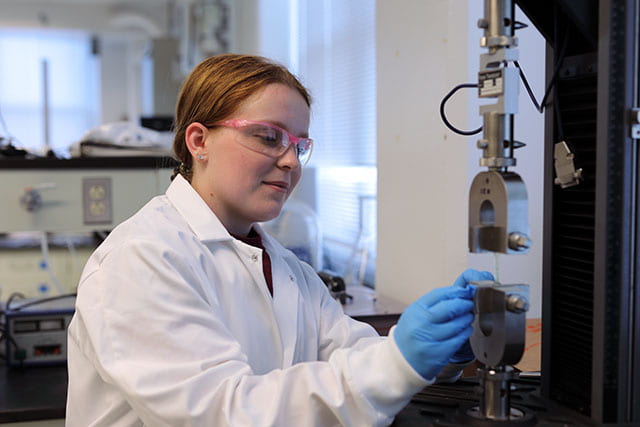Undergraduate Research Opportunities
We take pride in our undergraduate research program. The University of Delaware has a nationally recognized Undergraduate Research Program that has served as a model for numerous other colleges and universities throughout the U.S. Research experiences range from 10-week full-time summer projects on campus to off-site internships. Undergraduates may also work on research projects during the academic year for pay or credit.
Undergraduate research is an integral part of UD’s academic culture. We can provide you with general information as well as guidance on how to identify and approach a faculty mentor with whom you might like to work. For more information about all our programs, please explore this page or contact us if you are interested in getting involved.
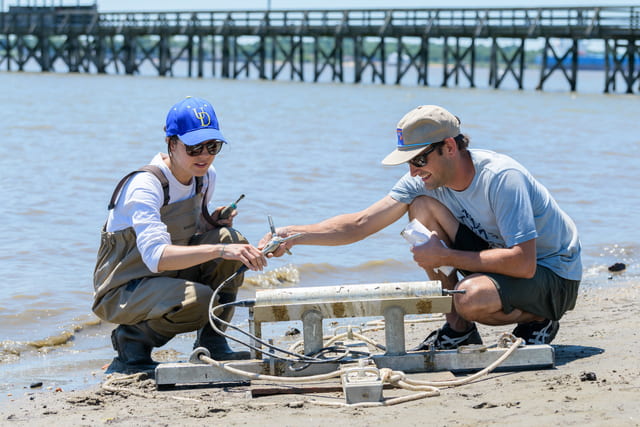
Chair’s Undergraduate Research Fellowship
Fellowships are competitive awards that provide undergraduate students with the opportunity to enhance their education by participating in directed research. The fellowships help students develop solid analytical skills and strong research techniques to pursue graduate school and careers in research fields or academia.
REU Summer Program
With support from the National Science Foundation Research Experiences for Undergraduates (REU) programs give talented undergraduates a chance to see and take part in research happening on the front lines of discovery.
Graduate Research Opportunities
Openings for Distinguished Scholars:
Scholarship opportunities for incoming Ph.D. students are available through the Civil and Environmental Engineering Distinguished Scholars Award. If you are eligible and interested in being considered, please indicate your eligibility and qualifications for this award in your application (e.g., under Relevant Experience or Personal Statement). A nomination letter from a Department faculty is required for consideration for this award.
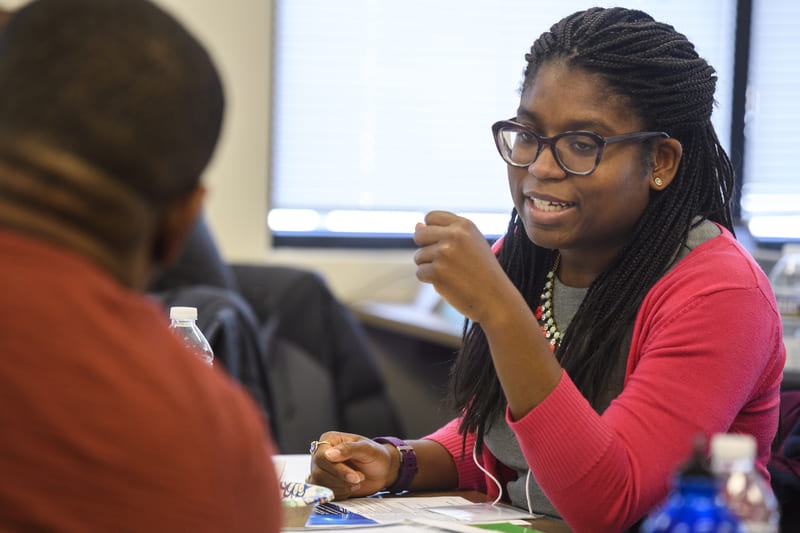
Details:
- Awards are administered as PhD research and teaching assistantships
- Yearly stipend of $34,000 + $1,000 toward student fees
- Conference attendance or professional development workshop allotment of $1500/year
- Full tuition waiver
- Each award is for up to 5 years
- You select the CEE concentration to study
Eligibility:
US citizen or permanent resident and:
- from an underrepresented group in STEM, and/or
- a first-generation college student, and/or
- a member of the LGTBQ+ community, and/or
- a student with extenuating personal circumstances.
Contacting Faculty. Prospective applicants are encouraged to contact faculty member(s) whose area of research most closely matches their interests to discuss potential research opportunities. Click here to access the Faculty Directory.
Have a question? Email Jacquee Lukawski, Graduate Academic Advisor at jacquee@udel.edu
Openings for Research Assistants
The following research projects are a sample list of funding opportunities for research assistantships for the current graduate student admission cycle. Additional opportunities continuously arise, and department faculty may nominate newly admitted (fall) master’s or PhD students for this award. Research Assistantships may carry occasional TA duties, as needed.
Visit Research Opportunities for the most current offerings.
Structural Engineering
Development of Recyclable Carbon-storing Composites for Infrastructure Applications
Overview: Fiber-reinforced polymer (FRP) composites have become an essential and ubiquitous construction material. In infrastructure, FRP composites are used in pultruded bridge decks, wind turbine blades, to strengthen and repair bridges and culverts, and as internal reinforcement in reinforced and prestressed concrete members. While FRP composites offer significant advantages over concrete and steel—such as higher strength-to-weight ratio, improved durability, and accelerated construction—these materials typically comprise glass or carbon fibers originating from non-renewable feedstocks with a substantial carbon footprint. In addition, matrix materials in FRP composites are thermosets, polymers with permanent covalent crosslinks between polymeric chains. The downside of crosslinks is their irreversible and permanent nature which makes thermosets intrinsically unrecyclable. Consequently, FRP composites are disposed in landfills or incinerated at the end of their usable service life, which contributes to environmental pollution.
This project develops novel FRP composite materials manufactured from renewable and carbon-negative feedstocks, like natural fibers and biomass-derived epoxy. In addition, the research integrates recyclable polymer networks in the composite matrix to design materials that retain the beneficial properties of thermosets while also imparting recyclability, self-healing and weldability to the composite. The expected outcome of this research is reduced environmental footprint and prolonged service life of FRP composites used in infrastructure.
Project Start Date: Fall 2023
Lead Researcher: Jovan Tatar, Ph.D.
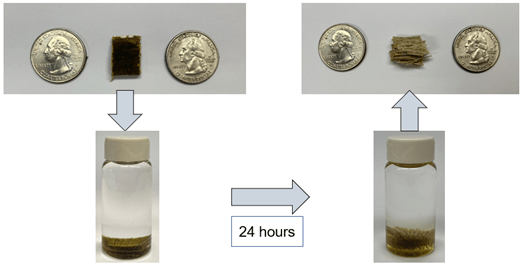
Recyclable flax fiber-reinforced polymer composite developed by Tatar Research Group. Preliminary work by the PI Tatar demonstrates separation of fibers and matrix in a flax/epoxy composite. Epoxy dissolution in a special solvent at room temperature was enabled by integrating recyclable polymer networks in the epoxy.
Durability of Steel Bridge Corrosion Protection Systems, Phase 2
Overview: The most widespread problem affecting our national infrastructure is corrosion. Metallic corrosion also affects nearly every industry sector. In fact, the world-wide economic impact of corrosion to be $2.5 trillion annually, equating to 3.4% of the global gross domestic product. To better design steel bridges for corrosion protection, objective methods are needed for predicting the services lives of common coatings in the diverse range of climates in which they are applied.
In Phase 1 of this study, the performance of six corrosion protection methods was established by developing a novel laboratory protocol simulating harsh real-world environments. Now, further work is needed to establish the performance of these systems in other environments, provide life-cycle cost estimates for these solutions, and perform laboratory testing to evaluate the performance of a broader range of corrosion protection systems, including new systems and repairs to damaged systems.
Project Start Date: Summer or Fall 2023
Lead Researcher: Jennifer McConnell, Ph.D.
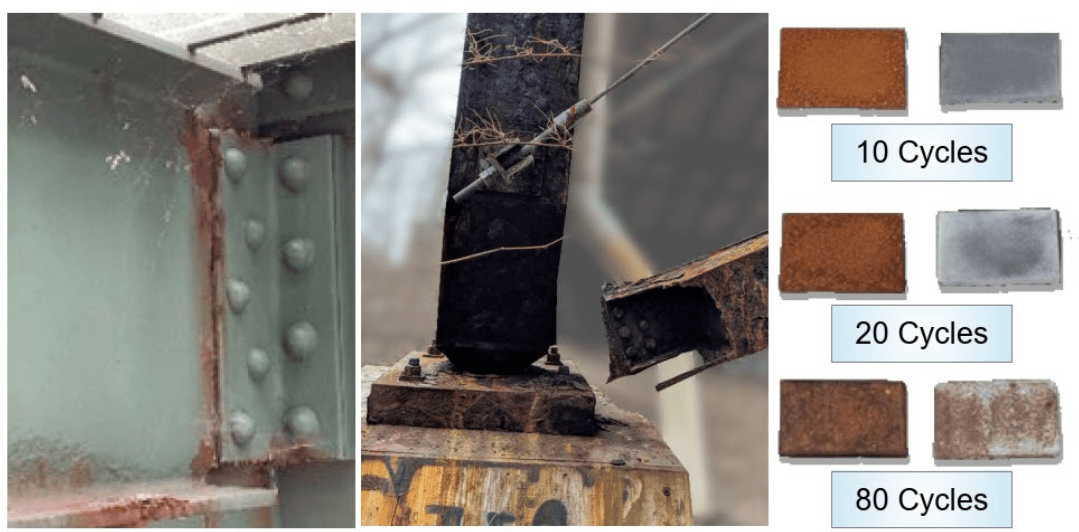
Failing Corrosion Protection Systems: (left) failing paint system, (middle) failure of uncoated weathering steel member due to corrosion in the Fern Hollow Bridges, which collapsed in Pittsburgh, PA on Jan. 28, 2022, (right), laboratory specimens simulating corrosion of different base materials with failing corrosion protection systems.
Effects of Thermal Loads and Overweight Vehicles on Bridges Due to the Changing Environment
Overview: Bridges are designed to resist a variety of static and dynamic loads arising from vehicular, pedestrian and environmental loads. Thermal loads acting on a bridge can vary as temperature changes, resulting in expansion and contraction in bridge components. The variation in temperature on a daily, seasonal, and yearly basis can influence the bridge response and lead to more cracking. With the changing environment as evident from sea level rise and extreme weather-related events, temperature differentials may increase, thereby inducing stresses beyond the estimated thermal loads for which the bridge was initially designed. The effects of thermal loads plus overweight vehicles on existing distressed bridges may have unintended consequences that need to be studied, including but not limited to more cracking and nonlinear thermal load, which in turn, influence the overall structural behavior and dynamic characteristics.
This project utilizes a combination of existing climatic data from the National Bridge Inventory (NBI) and structural health monitoring data to evaluate various structural components impacted by increasing variations in temperature on existing concrete slab and slab-on-girder bridges. Frequencies and mode shapes will be studied to better understand temperature loading, heat transfer by radiation, and increased vehicular loads due to overweight vehicles on existing bridges. The expected outcome of this research is to predict changes in dynamic characteristics of bridges due to increasing temperature and vehicular loads in the wake of the changing environment, and how this may influence future design loads.
Project Start Date: Fall 2023
Lead Researcher: Monique Head, Ph.D., P.E.
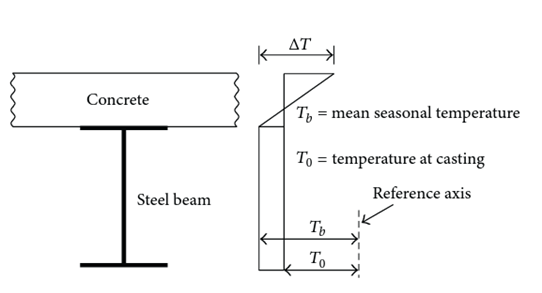
Temperature distribution in composite bridges (Source: Zhou and Yi, 2013). Preliminary work by PI Head has been focused on analyzing overweight vehicular loads and its influence on live load distribution factors used for analysis of existing bridges, where the effects of thermal loads need to also be considered.
Environmental Engineering
Reducing Greenhouse Gas Emissions through Microbial Respiration of Black Carbon
Overview: Methane is the second most important anthropogenic greenhouse gas (GHG) and contributes to almost one third of the current GHG warming. Breakdown products of organic wastes such as acetate are major precursors of methane in anaerobic systems, including landfills, sludge digesters, wastewater facilities, and animal manures. Biochar is a stable form of black carbon that has a large capacity to store and exchange electrons. We hypothesize biochar can serve as a terminal electron acceptor for anaerobic bacteria to degrade methane precursors, thereby preventing CH4 production in anaerobic systems. One major objective of this research is to develop a biochar-based technology that is effective in suppressing methane emissions from a broad range of anaerobic systems.
Project Start Date: Summer (preferred) or Fall 2023
Lead Researcher(s): Pei Chiu (Civil and Environmental Engineering) and Clara Chan (Earth Sciences)

Biochar as an electron acceptor enables anaerobic bacteria to degrade acetate and other electron donors, outcompeting methanogens and thus preventing CH4 formation.
Probing How Biochar Alters Soil Structure and Enhances Stormwater Runoff Reduction in Compacted Urban Soils
Overview: Biochar is a charcoal-like material formed by heating organic waste biomass (e.g., waste wood, manure, organic materials) in an oxygen-free environment. Biochar production is an ancient technology that has seen a resurgence worldwide due to bicohar’s ability to increase water infiltration, water retention, and pollutant retention and transformation if amended to soil or environmental treatment media.
We are evaluating the mechanisms by which biochars from different feedstocks and pyrolysis conditions when added to soil alter pore structure, redox conditions, microbial communities, plant growth, and nutrient retention and transformation. This study focuses on the impact of biochar amendment of roadway soils and compacted soils in urban parks. Activities will include field measurements, laboratory testing such as X-ray CT to quantify pore structure, and development of mathematical models to describe the relevant processes. Students will have the opportunity to interact with environmental scientists and policy makers in state and municipal governments who develop regulations on the use of biochar for stormwater treatment and carbon sequestration.
Anticipated Start Date: January or September 2023
Lead Researcher: Paul Imhoff, Ph.D.
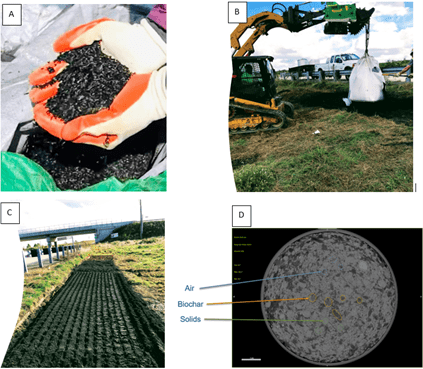
Biochar application to roadway soil to treat stormwater runoff: A – biochar from waste wood, B – application of biochar from supersack (white bag), C – biochar tilled into roadway soil, and D – X-ray CT of soil core containing soil and biochar.
Research Positions in Chin Lab
Overview: The Chin lab studies how anthropogenic activity ranging from the discharge of contaminants to greenhouse gas emissions perturbs biogeochemical processes. We are particularly interested in how chemical reactions contribute to contaminant fate (sorption, photolysis, redox) and the feedback between these processes and the environmental microbiome. We also study how dissolved organic matter influences and facilitates reactions of environmental and biogeochemical importance. We conduct a roughly equal mix of lab and field-based research that range from local sites to both the Arctic and Antarctic as well as locations in between. Currently, the Chin group is engaged in redox/electrochemistry research in wetlands at locations across the United States.
Anticipated Start Date: September 2023
Lead Researcher: Yu-Ping Chin, PhD.
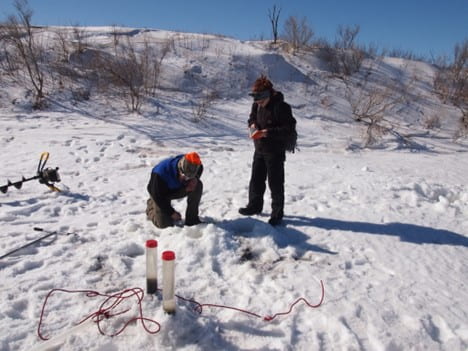
Chin Lab collecting field data.
Transportation Engineering and Civil Infrastructure Systems
Complex socio-technical system dynamics modeling and simulation
Overview: Our infrastructure systems are increasingly independent of each other, which is exposed to cascading failure. Meanwhile, people have different capacities to cope with infrastructure service loss, especially socially vulnerable populations. The risk disparity can be further exacerbated during disasters. Risk and resilience assessment of the complex socio-technical system is the first step toward building a resilient and equitable city. To do so, a systematic approach is required to integrate human-infrastructure interactions in network disruption characterization. The goal of this project is to develop a large-scale interdependent system modeling platform with interactions between infrastructure and human systems coupled and calibrated with theoretical analysis and empirical data. The expected outcome of this research is to enable a systematic understanding of the dynamics of human, disaster, and built environment nexus and provide stakeholders with a decision-making tool for testing different intervention policies to strengthen community resilience.
Anticipated start date: Fall 2023
Lead Researcher: Shangjia Dong, Ph.D.
Sand Fouled Ballast
Overview: Railroads that pass through the desert areas have difficulties dealing with the sand mixed with ballast, which impacts maintenance and operations. Sand infiltrates into the ballast layer due to different factors like the wind transporting sand grains or by migration of sand from the subgrade layer to the ballast layer. When sand fills ballast voids, the ballast can see a change in mechanical properties that can affect maintenance and safety. Thus, for example, sand infiltration into ballast affects the track stiffness (K). A low value of track stiffness can cause differential settlement. Whereas a high value of track stiffness leads to a reduction in track deflections but an increase in rail/tie forces and associated stresses in the track. The project aims to study the behavior of ballast when fouled with sand, and then measure its effect on track stiffness, track deflection, track degradation, and potentially time to the next maintenance.
To achieve project goals, a railway simulator box was built in the lab, which contains the substructure layer represented by the ballast and the superstructure layer represented by the rail, plate, and tie. Different test scenarios are simulated in the lab starting with clean ballast (0% fouling) and then sand-fouled ballast by 10%, 25%, 50%, 75%, 100%, and 125%, respectively. A load, representing a heavily loaded rail vehicle, is applied and deflection behavior measured using Linear Variable Differential Transformer (LVDTs). This allows for the analysis of track deflection, stiffness, and performance under a range of fouling conditions.
Start Date: Spring 2023/Fall 2023
Lead Researcher: Allan Zarembski, Ph.D.
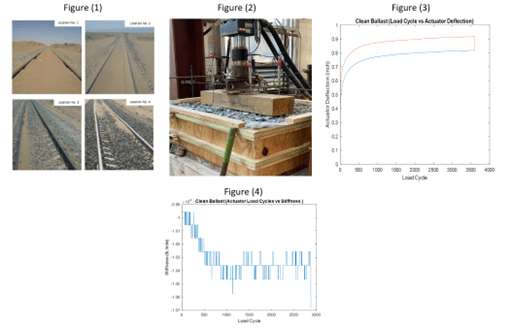
Figure (1) represents different track locations that have a variety sand fouled ballast ratio (location 1 to 4 sand ratio is 62.7%, 50.7%, 25.5%, and 25.9%) (Zakeri & Abbasi, 2012). Figure (2) represents the lab test’s setup. Figure (3) represents the data collected from the lab experiment (clean ballast test), which measures the deflection over the repeated load cycles. Figure (4) represents the stiffness under the repeated load.
Field Demonstration of Advance Landslide Warning Index for Railroad Tracks on Amtrak’s Harrisburg Line in Pennsylvania
Overview: Railroad rights-of-way often utilize through- and side-cuts to traverse mountainous and hilly terrain and avoid steep grades and tight curves. Consequently, cutting can produce unstable slopes, or geohazards, whose failure may waste material into the right-of-way, foul track, or cause derailments. To keep railways with geohazard populations operational, cuts should be routinely monitored such that slope maintenance and failure mitigation strategies can be implemented in a timely manner.
In Phase 1 of this research project, a geotechnical hazard identification and assessment framework reliant on remotely sensed images of the study was created. Using computer vision and artificial intelligence techniques to analyze right-of-way inspection videos recorded by track geometry cars and satellite images, portions of Amtrak’s Harrisburg Line in Pennsylvania were studied without using on-site geotechnical measurements. The framework aimed to relatively assess identified geohazards for failure likelihood to determine which should be prioritized for maintenance. Phase 2 of this research project aims to expand the framework with additional predictors from the available data to demonstrate the model’s ability to identify and relatively assess geohazards by testing it on the entirety of the Harrisburg Line.
Start Date: June 2023
Lead Researcher: Allan Zarembski, Ph.D.

Relative Risk Assessment Framework: (left) failure event on the Harrisburg Line in June, 2021 which disrupted operations, (right) combined risk scores across the study area calculated using object detection to localize unstable slope features of interest and landslide susceptibility mapping using geospatial data extracted from satellite imagery.
Coastal Engineering
Multi-scale flood modeling and impact to coastal communities
Overview: Due to growing coastal urbanization and accelerated climate change, coastal flooding/salinization is an intensifying hazard in the low-lying coastal areas and regions prone to compound flooding. The project will support a PhD student to develop a physics-based data-driven modeling system for coastal/urban flooding and groundwater infiltration. This innovative system will integrate data-driven parameterization to advance our understanding and prediction capability of flooding. The PhD student will extend an existing numerical model framework with more complete machine learning-based sub-grid models and subsurface flow and apply the model to predict flooding and salinization in coastal communities. Due to the multidisciplinary nature of the project, the graduate student will have extensive opportunities to work with several faculty members and researchers with expertise in Civil and Environmental Engineering and Earth Sciences in the Center for Applied Coastal Research and beyond.
Project Start Date: Fall 2023
Lead Researcher: Tian-Jian Hsu, Holly Michael, Carolyn Voter, Yao Hu, Fengyan Shi
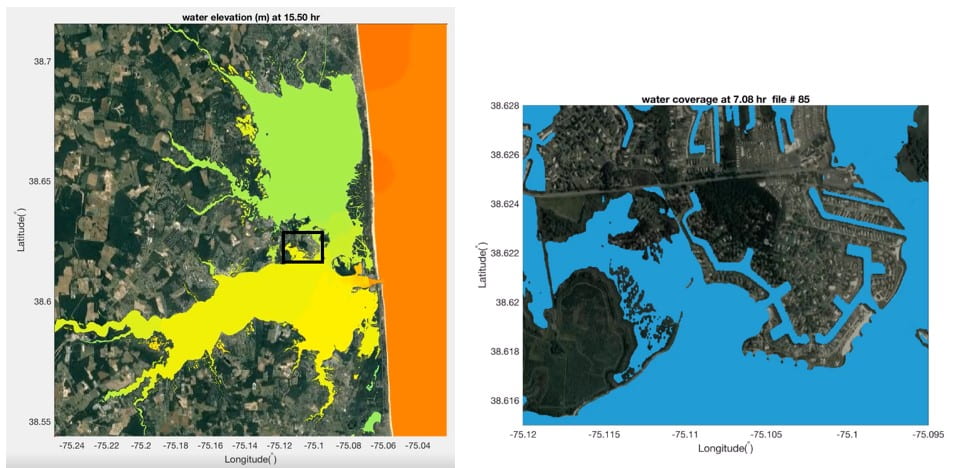
A NearCoM simulation of Inland Bays flooding (left) with emphasis on impact to a local community (right). The challenge of such simulation is the multi-scale nature of the problem and how to speed up the computation but still maintain reasonable accuracy.

